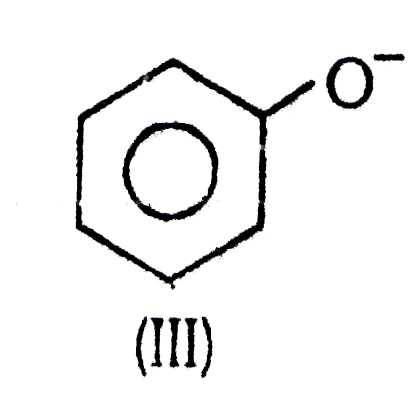Consider the reaction: C2H5O−+ Dimethyl sulphate ⎛⎜
⎜⎝Me−O−O∣∣S∣∣O−O−Me⎞⎟
⎟⎠→
The leaving group is:
MeOSO2O−
MeO−
Me(−)
MeOSO−2
The correct Answer is:B
To solve the question regarding the reaction of ethoxide ion (C₂H₅O⁻) with dimethyl sulfate, we need to identify the leaving group in the reaction. Here’s a step-by-step breakdown of the solution:
1. Identify the Reactants: The reactants in the reaction are ethoxide ion (C₂H₅O⁻) and dimethyl sulfate (Me₂SO₄). The structure of dimethyl sulfate consists of a sulfur atom bonded to two methoxy groups (–OCH₃) and has a sulfate group (–SO₄).
2. Understanding the Mechanism: The reaction between a nucleophile (C₂H₅O⁻) and dimethyl sulfate typically proceeds through an SN2 mechanism. In this mechanism, the nucleophile attacks the electrophilic carbon atom of the dimethyl sulfate, leading to the displacement of a leaving group.
3. Identify the Electrophilic Site: In dimethyl sulfate, the carbon atoms bonded to the methoxy groups (–OCH₃) are electrophilic due to the presence of the electronegative sulfur atom. This makes them susceptible to nucleophilic attack.
4. Determine the Leaving Group: When the ethoxide ion attacks one of the carbon atoms in dimethyl sulfate, one of the methoxy groups (–OCH₃) will be displaced as a leaving group. The leaving group in this case is the methoxy group (–OCH₃), which can be represented as MeO.
5. Final Product: The reaction will yield ethyl methyl ether (C₂H₅OCH₃) and the leaving group (MeO). The overall reaction can be summarized as:
C₂H₅O⁻+Me₂SO₄→C₂H₅OCH₃+MeO⁻
6. Conclusion: Therefore, the leaving group in this reaction is the methoxy group (–OCH₃), which can also be represented as MeO.
Final Answer:
The leaving group is: Methoxy group (–OCH₃).
C₂H₅O⁻+Me₂SO₄→C₂H₅OCH₃+MeO⁻
The leaving group is: Methoxy group (–OCH₃).
Topper's Solved these Questions
- ALCOHOL,PHENOL AND ETHERSBOOK - CENGAGE CHEMISTRYCHAPTER - ALCOHOL,PHENOL AND ETHERSEXERCISE - Exercises Assertion-Reasoning
10 Videos
- ALCOHOL,PHENOL AND ETHERSBOOK - CENGAGE CHEMISTRYCHAPTER - ALCOHOL,PHENOL AND ETHERSEXERCISE - Archives Single Correct
14 Videos
- ALCOHOL,PHENOL AND ETHERSBOOK - CENGAGE CHEMISTRYCHAPTER - ALCOHOL,PHENOL AND ETHERSEXERCISE - Exercises Multiple Correct
35 Videos
- ALIPHATIC AND AROMATIC ALDEHYDES AND KETONESBOOK - CENGAGE CHEMISTRYCHAPTER - ALIPHATIC AND AROMATIC ALDEHYDES AND KETONESEXERCISE - Archives Subjective
29 Videos
Similar Questions
Knowledge Check
The oxidation states of S atom in S4O2−6 from left to right respectively are
O−O∣∣S∣∣O−S−S−O∣∣S∣∣O−OA+6,0,0,+6B+3,+1,+1,+3C+5,0,0,+5D+4,+1,+1,+4The oxidation states of S atom in S4O2−6 from left to right respectively are
O−O∣∣S∣∣O−S−S−O∣∣S∣∣O−OA+6,0,0,+6B+3,+1,+1,+3C+5,0,0,+5D+4,+1,+1,+4Me−O∣∣C−O−CH2−CH2−⊕NH2NaOH−−−→Q
AMe−O∣∣C−O−CH2−CH2−NH2BMe−O∣∣C−NH−CH2−CH2−OHC DMeCOONa+HOCH2CH2NH2
DMeCOONa+HOCH2CH2NH2
Select the IUPAC name of the following
C2H5−N∣C2H5−O∣∣S∣∣O−C6H5
View SolutionIn the given reaction C6H5−O∣∣C−CH3(i)C2H8MgBr−−−−−−−−→(ii)H2O/H+(X) X will be
View SolutionConsider the following reaction.
CH3O16∣∣C−O18−C2H5+H2O16H+−−→Heat
The products formed in the reaction are
View SolutionPh−O||C14−CHN2Ag2O−−−−−→H2O(A), product (A) is :
View SolutionThe oxidation states of S atom in S4O6O2− from left to right respectively are
O−O∣∣S∣∣O−S−S−O∣∣S∣∣O−O
View Solution

 (IV)
(IV)